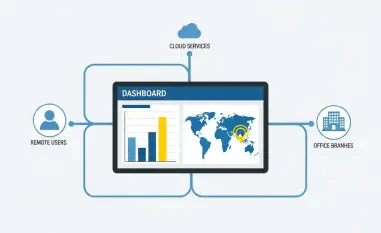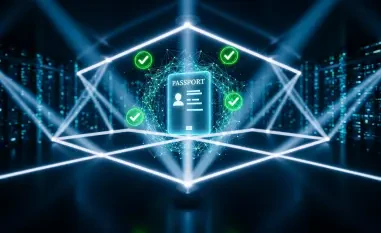In an era where cyber threats evolve at an alarming pace, keeping abreast of the latest advancements in endpoint security and network monitoring is not just beneficial but essential for safeguarding digital infrastructures. For the week of October 3rd, a wealth of updates from leading industry players offers a glimpse into the innovative strategies and technologies shaping the fight against cybercrime. From groundbreaking product launches to strategic partnerships, these developments address the pressing challenges faced by IT professionals and business leaders. The focus spans artificial intelligence, proactive defense mechanisms, and the human element in cybersecurity, reflecting a multifaceted approach to securing endpoints and networks. This comprehensive roundup delves into the most significant news, providing insights into how companies are fortifying their defenses against increasingly sophisticated attacks. Let’s explore the key trends and announcements that are driving the industry forward with renewed vigor and purpose.
Cutting-Edge Technologies Shaping the Industry
AI and Automation in Focus
The integration of artificial intelligence (AI) and automation into endpoint security and network monitoring solutions marks a pivotal shift in how organizations tackle cyber threats. Auvik, under the leadership of newly appointed Chief Technology Officer Dan Zaniewski, is spearheading efforts to embed AI-driven enhancements into its platform. These advancements aim to deliver intelligent automation that significantly reduces downtime and optimizes operational workflows. By harnessing AI, the goal is to predict potential disruptions before they escalate, ensuring smoother network performance. This reflects a broader industry acknowledgment that manual processes alone cannot keep pace with the volume and complexity of modern cyber threats, pushing vendors to innovate relentlessly.
Swimlane is another key player leveraging AI through its Business Continuity Management Solution, designed to offer actionable risk mitigation guidance. This tool integrates automation to streamline responses to potential disruptions, minimizing financial and operational losses. Similarly, Vectra AI is enhancing its capabilities with AI-driven insights to improve threat detection and response times. This consistent focus on AI across multiple vendors highlights a unified push toward smarter, more adaptive security frameworks. As threats become more intricate, the reliance on automation to handle repetitive tasks and analyze vast datasets becomes not just advantageous but indispensable for maintaining robust defenses.
Proactive Defense and Platform Resilience
A notable trend in this week’s updates is the emphasis on proactive defense strategies to bolster resilience against cyberattacks. Ivanti has introduced Connect Secure (ICS) version 25.X, featuring a modernized operating system and enhanced platform hardening. These updates are crafted to minimize vulnerabilities and fortify systems against potential exploits before they occur. By prioritizing preemptive measures, Ivanti aims to ensure that organizations can maintain operational continuity even under threat. This approach underscores the industry’s shift from merely responding to incidents to actively preventing them through fortified architectures.
Sophos also contributes to this trend with its Advisory Services Suite, which focuses on identifying security gaps through comprehensive penetration testing. These services enable organizations to uncover weaknesses in their defenses and address them before attackers can exploit them. The proactive nature of such offerings is critical in an environment where cyber threats often outpace traditional reactive measures. By simulating real-world attack scenarios, Sophos helps businesses build resilience and adapt to evolving risks. This dual focus on prevention and preparation across vendors illustrates a maturing cybersecurity landscape intent on staying one step ahead of adversaries.
Strategic Moves and Collaborations
Enhancing Multi-Cloud Security
As organizations increasingly adopt hybrid and multi-cloud architectures, securing these distributed environments has become a top priority for cybersecurity vendors. Vectra AI’s acquisition of Netography stands out as a strategic move to address this challenge. By integrating Netography Fusion, now rebranded as Vectra Fusion, into its portfolio, Vectra AI enhances its cloud-native observability capabilities. This ensures better protection for enterprises operating across multiple cloud platforms, offering agentless monitoring to detect anomalies in real time. The focus on comprehensive visibility across diverse infrastructures highlights the industry’s recognition of the unique vulnerabilities inherent in such setups.
This trend extends beyond acquisitions, as the need for tailored solutions for multi-cloud environments grows. Dataminr’s expansion of Intel Agents to include monitoring of physical events indirectly supports these distributed systems by providing insights into disruptions that could impact cyber infrastructure. Understanding how physical incidents affect digital operations is crucial for maintaining security in hybrid setups. These efforts collectively demonstrate a commitment to addressing the complexities of modern IT landscapes, ensuring that organizations can safeguard their assets regardless of where they reside in the digital ecosystem.
Ecosystem Integrations for Broader Impact
Strategic partnerships are proving to be a powerful mechanism for expanding cybersecurity capabilities, as evidenced by Tanium’s integration with Microsoft Sentinel. This collaboration leverages AI to accelerate threat investigation and remediation, combining the strengths of both platforms for a more robust defense. Such integrations enable organizations to benefit from a seamless ecosystem where data and insights flow effortlessly, enhancing the speed and accuracy of responses to cyber incidents. This approach is particularly vital in an era where threats can propagate rapidly across networks, necessitating swift and coordinated action.
Beyond individual partnerships, the broader trend of ecosystem collaboration reflects a maturing industry perspective. Vendors are recognizing that no single solution can address all cybersecurity challenges, prompting alliances that pool expertise and resources. These integrations not only broaden the scope of protection but also improve user experience by simplifying the implementation of complex security measures. As companies continue to forge such connections, the resulting synergies promise to deliver more comprehensive and effective defenses, ultimately benefiting businesses of all sizes in their efforts to combat cyber threats.
Perspectives on Cybersecurity Challenges
The Human Factor in Cybersecurity
An insightful angle emerging from this week’s updates is the recognition of cybersecurity as a deeply human-centric challenge. Comcast Business’s latest Cybersecurity Threat Report introduces the concept of “The Human Equation,” emphasizing that technology alone cannot secure an organization. Human behavior often plays a critical role in security incidents, whether through unintentional errors or deliberate actions. This perspective urges businesses to invest in education and awareness programs alongside technical defenses, ensuring that employees are equipped to act as the first line of defense against potential threats.
This human-centric approach also acknowledges the emotional and psychological aspects of cybersecurity. Stress, lack of training, or simple oversight can lead to lapses that compromise even the most advanced systems. By fostering a culture of vigilance and providing accessible resources, organizations can mitigate these risks significantly. The report’s analysis of billions of events offers actionable insights for business leaders, encouraging a balanced strategy that pairs cutting-edge tools with ongoing employee engagement. This dual focus is essential for creating a sustainable security posture in today’s threat landscape.
Addressing Insider Threats
Complementing the human-centric theme, expert commentary during National Insider Threat Awareness Month sheds light on the importance of tackling risks from within. Insider threats, whether malicious or accidental, pose a unique challenge as they often bypass traditional external defenses. Industry thought leaders stress the need for best practices such as regular training, clear policies, and robust monitoring to detect unusual behavior early. These measures aim to empower employees while holding them accountable, striking a balance between trust and security.
The discussion around insider threats also highlights the necessity of tailored solutions based on organizational needs. Different industries face varying levels of risk, and a one-size-fits-all approach is rarely effective. By leveraging insights from experts, companies can develop targeted strategies that address specific vulnerabilities, whether through enhanced access controls or behavioral analytics. This focus on internal risks serves as a reminder that cybersecurity extends beyond external attackers, requiring a comprehensive framework that encompasses all potential sources of compromise. Such an approach ensures a more resilient defense against the full spectrum of threats.
Accessibility and Holistic Security Strategies
Democratizing Security Solutions
A refreshing trend in this week’s news is the push toward making cybersecurity solutions more accessible and user-friendly. Swimlane’s adoption of a flat-cost pricing model with unlimited users breaks down financial barriers, allowing organizations of varying sizes to access enterprise-grade tools. Similarly, Ivanti’s customer-focused enhancements to Connect Secure prioritize ease of use without sacrificing security. These initiatives reflect an industry-wide commitment to democratizing protection, ensuring that smaller businesses are not left vulnerable due to budget constraints or complex implementations.
This focus on accessibility also extends to the design of security tools, with an emphasis on intuitive interfaces and streamlined processes. By reducing the learning curve, vendors enable IT teams to deploy and manage solutions effectively, even with limited resources. This trend is particularly significant in a landscape where cyber threats target entities of all sizes indiscriminately. Ensuring that robust defenses are within reach for every organization strengthens the overall cybersecurity ecosystem, creating a more secure digital environment for everyone involved.
Holistic Security Approaches
Another prominent development is the move toward holistic security strategies that address both digital and physical dimensions of risk. Dataminr’s expansion of Intel Agents to monitor physical events alongside cyber threats exemplifies this approach. Recognizing that disruptions in the physical world—such as natural disasters or geopolitical events—can have cascading effects on digital infrastructure, this solution provides a more complete picture of potential risks. Such comprehensive monitoring is vital for organizations operating in interconnected environments where a single incident can trigger widespread impact.
This holistic perspective also considers the interplay between various types of threats, encouraging vendors to develop solutions that cover multiple domains. Swimlane’s Business Continuity Management Solution, for instance, integrates financial and reputational risk assessments into its framework, ensuring that businesses are prepared for all facets of a crisis. By adopting such all-encompassing strategies, the industry is better positioned to anticipate and mitigate complex challenges. This shift toward broader, more integrated security measures promises to enhance resilience across the board, safeguarding organizations against an ever-widening array of threats.
Key Takeaways and Future Directions
Balancing Innovation with Practicality
Reflecting on the updates for the week of October 3rd, it becomes clear that the endpoint security and network monitoring sectors have reached a transformative juncture. The relentless push for innovation through AI and automation stands out, with vendors like Auvik and Swimlane embedding these technologies to enhance efficiency and threat detection. Strategic collaborations, such as Tanium’s integration with Microsoft Sentinel, have proven instrumental in addressing intricate cybersecurity challenges, while acquisitions like Vectra AI’s move with Netography fortify defenses in multi-cloud environments. These efforts underscore an industry determined to stay ahead of evolving threats through technological prowess and cooperative strength.
Charting the Path Ahead
Looking back, the insights from that week emphasize actionable steps for the future. The human factor, as highlighted by Comcast Business’s report, reminds stakeholders to prioritize education alongside tech solutions. Meanwhile, the focus on accessibility through initiatives like Swimlane’s pricing model sets a precedent for inclusivity in cybersecurity. Moving forward, organizations are encouraged to adopt a balanced approach, integrating cutting-edge tools with proactive training and holistic strategies to build enduring resilience. These lessons from early October pave the way for a more secure digital landscape, urging continuous adaptation and collaboration as the cornerstone of future defenses.













